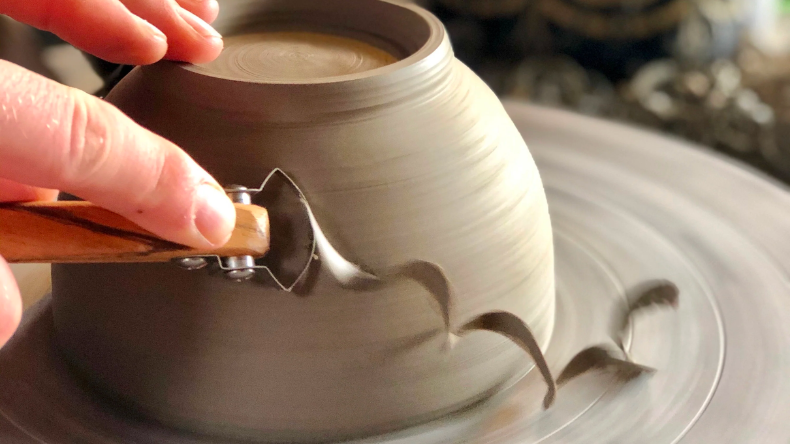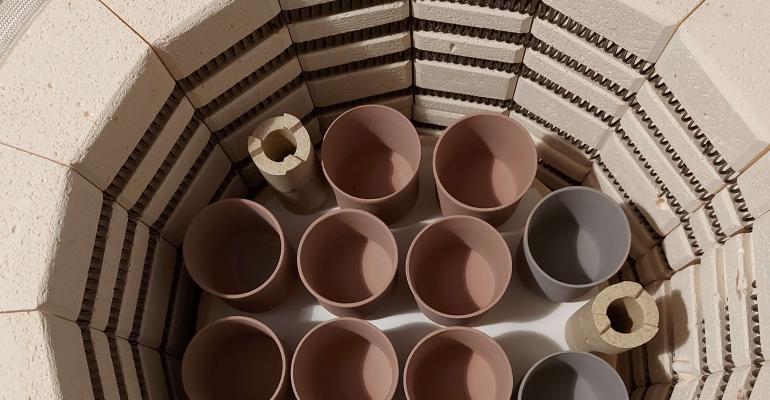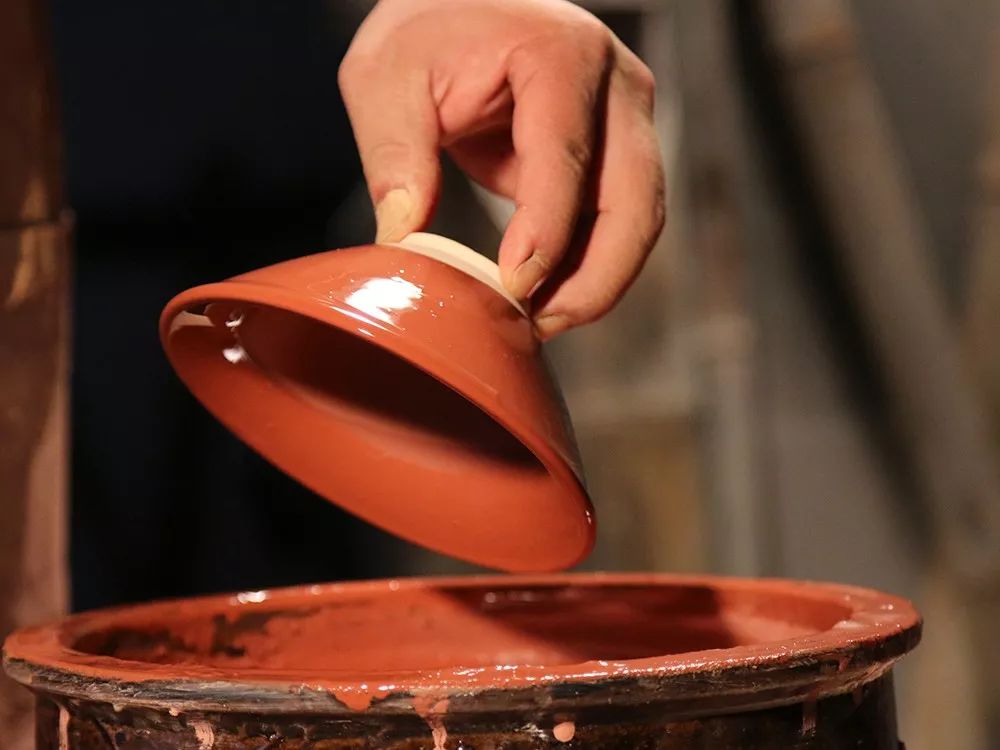All Jian Zhan teacups are handmade going through 13 elaborated processes. Below are the step by step how natural earth is being transformed by skilled craftsmen into beautiful art pieces on your tea table.

1. Choosing the right ore for clay and glaze.
Jian Zhan is classified as a stoneware thus stoneware clay with high iron content is being chosen. Different ores will produce different glazes at different temperature and firing environment. Thus craftsmen take much effort in finding, choosing and extracting the different raw materials for their finished products.

2. Breaking down the clay and glaze ore.
In this raw form, these clays and ores are found in rock sizes which are not suitable for pottery. Craftsmen have to break these rock sizes down into finer sizes to prepare them for the next stage of production.

3. Washing and Sifting of clay materials.
After breaking down into finer particles. We have to wash off and sift existing impurities out from the raw materials. Since these materials come from nature, impurities and other foreign particles can be found in them.

4. Blending ingredients based on various clay materials and ratios.
All craftsmen have their own secret recipes, either being passed down from generations or experimented over the years. These concoctions give each craftsman their unique characteristics forming their proprietary art pieces. Jian Zhan collectors highly sought after these proprietary art pieces by famous craftsmen.

5. Filtered clay and glaze materials are left to cure.
These filtered clay and glaze materials are left to rest to remove excess water from the previous process.

6. Clay Wedging.
The purpose of kneading is to remove any remaining air from the clay or minimize it as much as possible, resulting in a uniform and consistent clay. This helps to prevent cracking during drying and firing.

7. Knead all the clay materials into appropriately sized clay blocks.
Hand or machine knead to form clay blocks in order for the craftsmen to work to form their desired shape.

8. Pottery throwing on the pottery wheel.
Craftsmen start manipulating clay to create a desired form or structure. This is a fundamental step in pottery and ceramics, where the artist transforms a lump of malleable clay into a three-dimensional object.

9. Trimming and fine shaping.
The finer details are in progress. Artists will then trim off and shape the rougher aspects of the cup skeletons. As Jian Zhan are hand made, much time are being spent to fine-tuning the rough edges.

10. Bisque firing.
Craftsmen bisque fire the cups in order to remove excess moisture which may crack the cups during the actual firing. Due to the lower temperature of around 800 degrees, these cups are not formed fully but just to keep them in shape and burn out any organic materials and impurities found in these natural materials.

11. Glaze Application
Every Craftsmen has their own unique glaze recipes giving each Jian Zhan their artistic finishing. The glaze application process is both a science and an art, and artists often experiment with different glaze combinations and application techniques to achieve the desired results in their finished pieces giving them a glassy and decorative coating.

12. Kiln Loading
As Jian Zhan are fired in the most traditional way, in dragon kilns. These dragon kilns have been around for hundreds of years and they have big space within to store thousands of cups at once for firing. Due to the extremely high rejection rates due to different atmospheric temperatures at different sections of the dragon kiln. Craftsmen load these cups at different areas of the kilns to produce different results after firing.

13. High-Firing Kiln
The most demanding process as all Jian Zhan have to be fired for a minimum of 72 hours, 3 days straight without stopping. These dragon kilns are fed with pine wood to fire up to above 1300 degree celsius. Unlike electric ovens whereby the temperature can be set, traditional dragon kilns firing have to be consistently monitored by the craftsmen on a regular basis to prevent any drastic fall or increase in temperature. At any time whereby these conditions are not met, all Jian Zhan will be scrapped.

